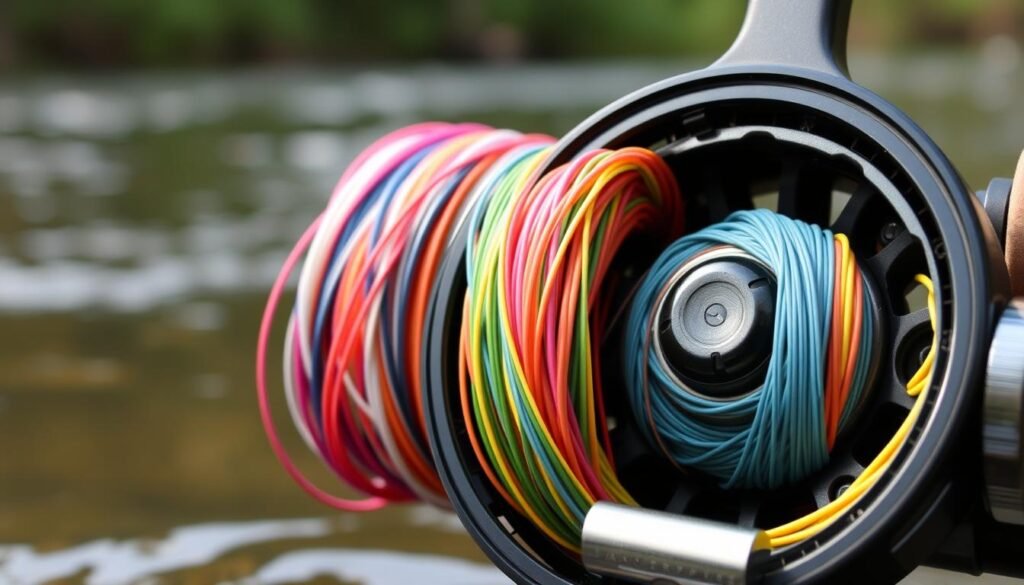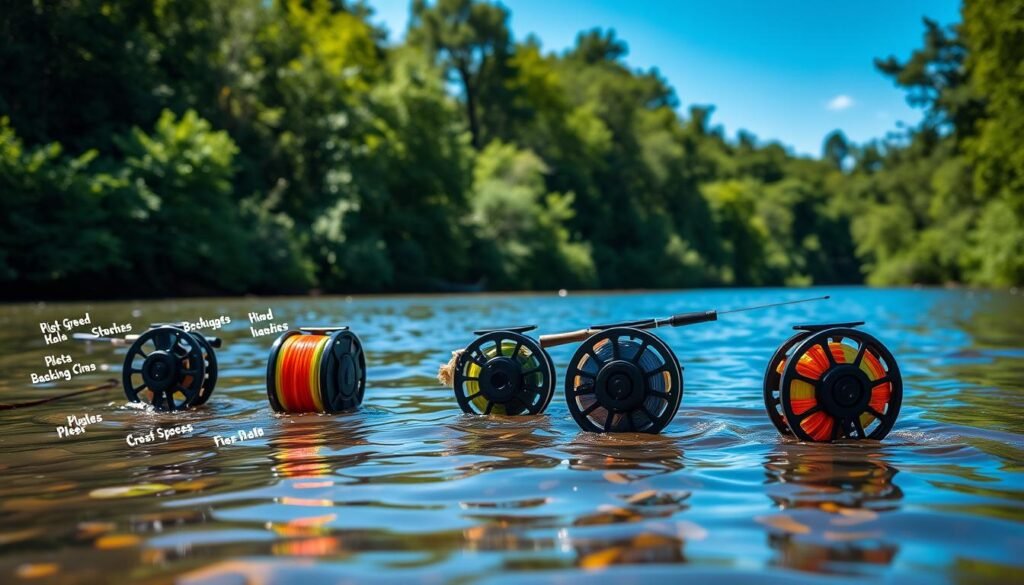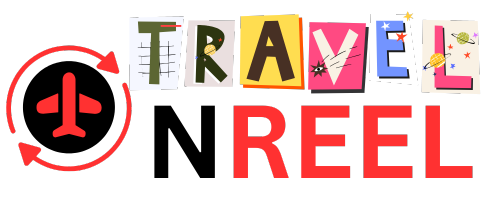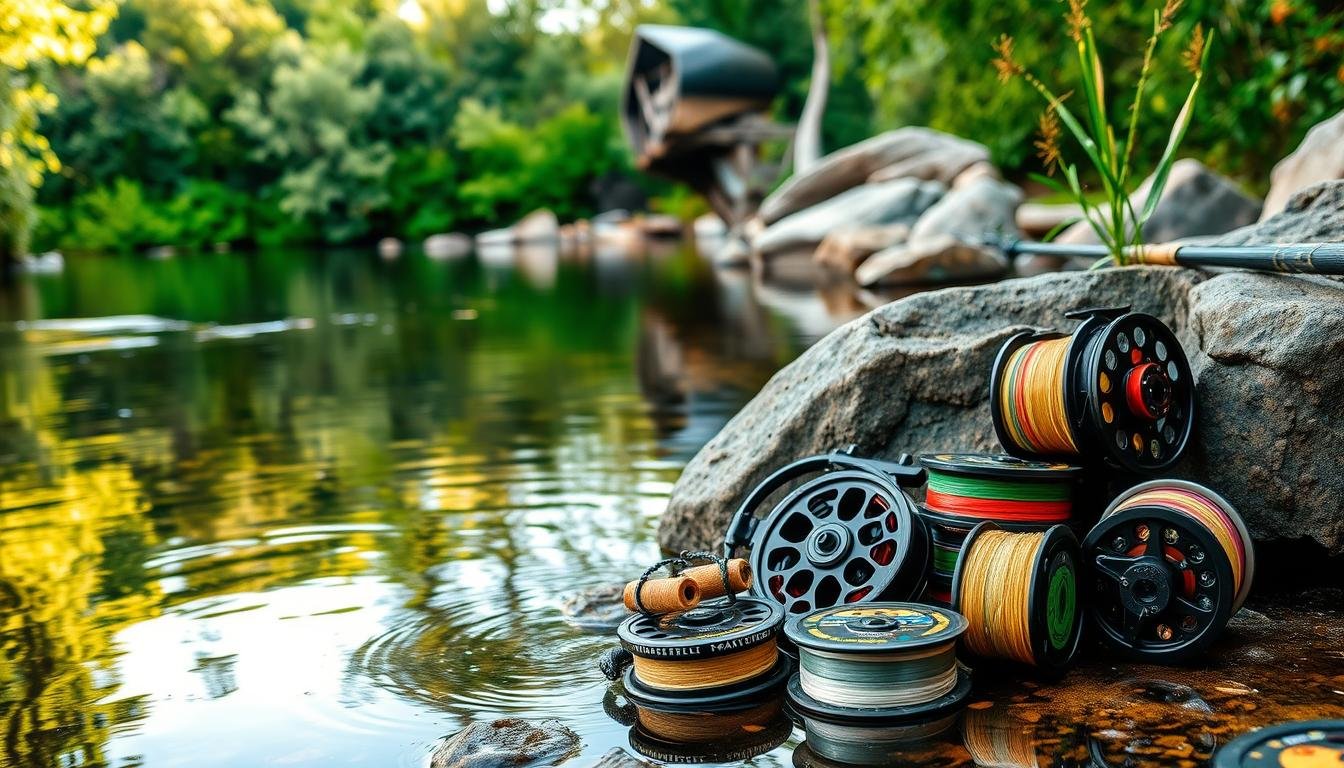Fly fishing needs the right backing weight for the best experience. The right weight improves my performance and keeps me calm during big fish battles. This guide shares my knowledge on fly reel backing weight, based on research and personal experience.
This article covers important topic of what Is the best weight for backing fly fishing . It helps both new and experienced anglers find the right backing weight. Knowing this can make a big difference in catching your next fish.
Key Takeaways
- Fly fishing backing weight plays a critical role in casting performance and fish handling.
- Options like braided nylon and Gel-Spun materials cater to different fishing environments.
- Proper backing ensures that I have the necessary line capacity for various fish species.
- Understanding reel capacities can help me select the right amount of backing.
- Regular maintenance and proper knots are vital for reliable performance during fishing.
Table of Contents
Introduction to Fly Fishing Backing
Fly fishing backing is key in my fishing setup. It connects the fly line to the reel. It gives extra line for when fish run far. I usually choose braided Dacron backing, in 20 or 30-pound test.
The average fly line is 80 feet long. About 40 feet is for the running line. The rest is for casting. I mostly use *floating fly lines* for 95% of my fishing.
Intermediate fly lines are best for fishing in deep water. They let my flies sink slowly. This is great for weedy or shallow areas.
Backing is crucial in deep water. It helps control my lure. Sink Tip or Floating/Sinking lines are good for both floating and sinking. I also manage my leader tippet sections, which are about two feet long.
I use different weight fly rods for various fish. Light rods are for small stream trout. Heavy rods are for big saltwater fish. My gear must work well together.
Choosing the right fly fishing backing is important. It affects how well I fish. Knowing how my gear works helps me fish better. The right backing lets me fish in many conditions with confidence.
Understanding Fly Line Backing
Learning about fly line backing is key to my fishing success. It’s not just a simple line. It has many uses that make fishing better.
Functionality of Fly Line Backing
The main job of fly line backing is to give me enough length. This is especially true when I’m fighting strong fish that run a lot. For trout fishing, a 20 lb. test backing works well.
A five-weight reel needs about 80 to 120 yards of backing. The size of the reel and the line I use also matter. In saltwater, I choose 30 lb. backing because I might catch bigger fish.
Common Mistakes with Backing
When I get ready to fish, I watch out for common mistakes. One mistake is putting too much backing on the reel. This can make casting hard.
Not checking or updating old backing can also cause problems. I make sure to check my backing often. Using fly fishing backing tips helps keep my gear in top shape.
What is the Best Weight for Backing Fly Fishing
Finding the right weight for fly fishing backing is key for a great day on the water. A 30-lb Dacron backing works well for most freshwater fishing, like catching trout and panfish. For saltwater fishing, you might need heavier backing to handle the strong currents.
Choosing the right backing weight depends on several things. The fish you’re after, your reel’s specs, and where you’re fishing all matter. For example, I use 100-125 yards of backing for a 4- or 5-weight reel. This is a good amount for catching trout.
Gel spun backing is strong and has a smaller diameter than Dacron. It’s good because it doesn’t get caught in guides, especially with lighter tackle. But, it’s more expensive. If you don’t need a lot of backing, Dacron might be cheaper.
It’s important to spool your backing correctly. Wear gloves to avoid damaging the backing. Spooling wrong can cause big problems later.
| Backing Type | Recommended Weight | Strength | Best For |
|---|---|---|---|
| Dacron | 30 lb | 20 lb (freshwater) | Trout, panfish |
| Gel Spun | 50 lb (compared to Dacron) | Stronger, smaller diameter | Large saltwater species |
| Braided Polyethylene | 20 lb | Strong and durable | Varied species |
In short, picking the right backing weight is important. It should match your fishing goals, gear, and the place you’re fishing. This will make your fly fishing better.
Importance of Proper Fly Reel Backing Weight

Knowing how much fly reel backing to use is key to better fly fishing. The right amount helps balance your gear. This balance makes casting easier and less tiring over time.
Balancing Your Setup
To find the best fly line backing weight, match your backing with your fly line and rod. This is important for several reasons:
- Improved Casting Distance: The right backing makes your casts go farther and better.
- Enhanced Fish Control: A balanced setup helps you control fish better, keeping them safe.
- Cost-Effectiveness: Backing saves space on your reel, which is expensive.
- Essential for Fish Runs: You need enough backing for fish that run far, keeping you in control.
Cortland has many backings, like Micron, Gel Spun, and Spliceable Hollow Core. For example, their 30 lb Gel Spun backing is great for freshwater and small saltwater fish. Their 40 lb Spliceable Hollow Core is strong for medium-sized saltwater fish.
Choosing the right fly reel backing weight makes fly fishing better. It helps you cast better and control fish more easily.
Choosing the Right Fly Fishing Backing Materials
Choosing the right fly fishing backing materials is key. It makes your gear last longer and work better. There are two main types: braided nylon and gel-spun fibers. Each has its own benefits, which can make your fishing better.
Common Options: Braided vs Gel-Spun
Braided nylon is a favorite for many. It’s cheap and works well. But, it can be thicker, which might limit how much line you can use.
Gel-spun backing, on the other hand, is stronger and thinner. This means you can use more line without it being too bulky. It’s great for catching bigger fish.
Testing Different Materials
While fishing, I like to try out different backings. I check how they feel, how visible they are, and how well they hold knots. Backings can perform differently, so it’s good to try them out.
For example, when fishing for big bass or brown trout, the right backing can really help. It’s important for handling the pressure of catching big fish.
Fly Fishing Backing Recommendations for Different Species

Choosing the right backing is key, depending on the fish I’m after. Backing needs change between freshwater and saltwater fish. I make sure I have the right strength and capacity for each.
Backing for Freshwater Species
For trout in freshwater, I suggest 50-100 yards of 20lb-30lb test weight backing. This balance is good for the various fish sizes in freshwater. Dacron backing is also a cost-effective option for its knot strength and durability.
Backing for Saltwater Species
In saltwater, my recommendations change. For big fish like tarpon or permit, I need 200 yards or more of backing. Gel Spun Polyethylene (GSP) backing is better here. It’s strong, yet thin, for more line on my reel. GSP also withstands saltwater’s rough conditions.
Choosing the right backing is crucial for a good fishing trip. Whether it’s freshwater or saltwater, the right backing makes a big difference. It helps me land that big catch, every time.
Fly Fishing Backing Weight Based on Reel Size
Knowing how fly reel sizes and backing weight relate is key for better fishing. Choosing the right backing weight makes my gear work well. It helps avoid problems during fishing.
Understanding Reel Capacities
My fly reel’s size tells me how much backing it can hold. Most reels can take 100 to 150 yards of backing. It’s best to use 100 to 125 yards, depending on my fishing needs.
Using too much or too little backing can mess up my casting. It can also make fighting big fish harder.
Attaching the fly line to the backing might seem hard. But, there are easy ways to do it. Modern fly lines often have welded loops for a simple connection.
If there’s no loop, the Albright or nail knot works well. Adding a monofilament piece makes leader changes easier.
| Reel Size | Backing Weight | Recommended Backing Length |
|---|---|---|
| 4-5 wt | 20# | 100-125 yards |
| 6-7 wt | 20# | 125-150 yards |
| Saltwater | 30# | 100-150 yards |
Using a loop-to-loop connection makes setting up easier. It’s important to check the manufacturer’s guide for the right backing weight. This ensures a great fishing experience.
Best Fly Line Backing Weight for Trout Fishing
When I fish for trout, the right fly line backing weight is key. I usually use 100-125 yards of backing, with a test strength of 20lb to 30lb. This setup lets me control my line well and handle common freshwater stream challenges.
For small trout, I need about 25-50 yards of backing. Regular-sized trout call for 50-100 yards. And for big trout, I go up to 150 yards. Knowing this helps me prepare better, making my fishing trips more fun and productive.
Using top materials like thermoplastic polymer (PET) or advanced UHMWPE makes my setup even better. Knowing the best backing weight for trout fishing helps me make precise casts and delicate presentations.





